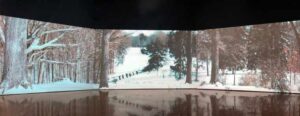Introduction
The Eskenazi Museum 4K laser projection project at Indiana University is a breakthrough in how museums deliver immersive art experiences. By using state-of-the-art 4K laser projectors, the Sidney and Lois Eskenazi Museum of Art has transformed its galleries into interactive and visually stunning spaces where contemporary art comes alive.
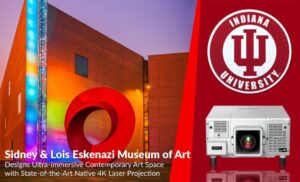
The Role of 4K Laser Projection in Modern Museums
Projection technology is no longer limited to classrooms or corporate boardrooms. In the world of museums, native 4K laser projection provides unmatched clarity, vibrant colors, and long-lasting performance. According to ProjectorCentral, laser projectors are becoming a preferred solution in cultural institutions worldwide.
By adopting this technology, the Eskenazi Museum ensures that visitors can engage with contemporary art in ways that were once impossible.
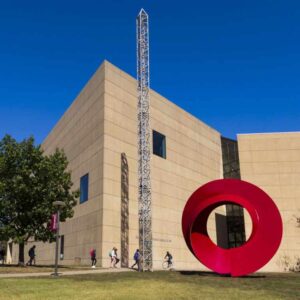
Enhancing the Visitor Experience
One of the main advantages of 4K laser projection is its ability to create ultra-realistic images that make visitors feel as though they are part of the artwork itself. The museum uses advanced projection mapping to transform walls, floors, and ceilings into living canvases. This approach goes far beyond static displays, offering a new dimension of storytelling.
If you are curious about similar applications, explore our LG ProBeam BU60RG 4K Projector Review for insights into how projectors enhance professional and educational environments.
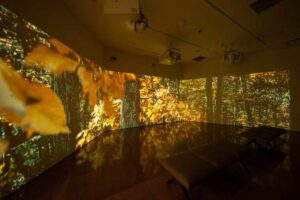
Why Indiana University Chose Native 4K Laser
The Eskenazi Museum’s decision was based on three key factors:
High Resolution & Detail – Native 4K provides unmatched clarity.
Reliability – Laser projectors require minimal maintenance.
Immersive Quality – Perfect for large-scale art installations.
This aligns with trends in museum technology where projection systems replace traditional lighting to create dynamic, immersive exhibits.
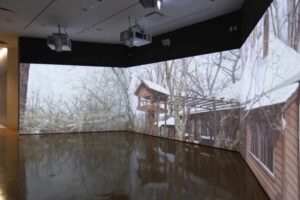
Broader Impact on Contemporary Art
The introduction of 4K projection reshapes not only the museum’s exhibits but also the way visitors interact with contemporary works. For institutions aiming to attract younger, tech-savvy audiences, immersive projection has become an essential strategy.
For more examples of innovative projector use in education and business, read our BenQ LH930 Business Projector Review.
Conclusion
The Eskenazi Museum 4K laser projection project demonstrates how technology can elevate the cultural sector. By integrating native 4K laser projection, Indiana University has created a space that not only showcases art but also redefines how it is experienced. This project sets a precedent for other institutions exploring immersive exhibition design.
